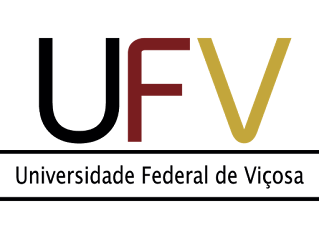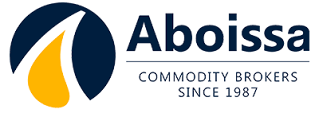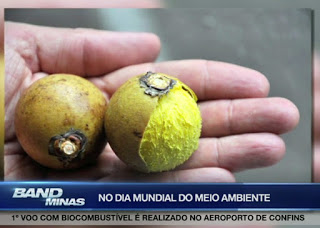Amazon fire is more linked to the use of grassland fire and desmate than to drought, study says
segunda-feira, outubro 31, 2022
A Brazilian study shows that the uncontrolled use of fire by man has more influence than the drought in fires recorded throughout the Amazon between 2003 and 2020. According to the authors, most periods with high numbers of fire outbreaks are more related to agricultural fires and deforestation than to extreme drought conditions.
On average, 32% of the areas burned annually in the biome were on agricultural land (dominated by pastures), followed by natural fields (29%) and mature forest areas (16%). When assessing deforestation and water deficit anomalies, the first factor contributed more than the second to the fires in the analyzed period.
In addition, by innovating and expanding the scope of analysis for the Amazon regions of the nine countries with the forest in their territories, the work showed that Brazil and Bolivia responded together for most of the annual detections of fire outbreaks in the period. This represents, in the Brazilian case, on average, more than half of the areas burned annually in the Amazon and, in Bolivian lands, about one third.
Although 63% of the Amazon is in Brazilian territory, the forest extends through Peru, Bolivia, Colombia, Venezuela, Suriname, Guyana, French Guiana and Ecuador, covering a total area of around 6.67 million square kilometers (km²), considering the limit of the Lato Sensu Amazon).
The study was attended by scientists from the National Institute of Space Research (Inpe), the National Center for Monitoring and Alerts of Natural Disasters (Cemaden) and the Federal University of Maranhão (UFMA). The article is part of a special issue of the scientific journal Global Ecology and Biogeography that aims to discuss the growing threat of forest fires worldwide.
Currently, Brazil has again had a high number of fires in the Amazon – the accumulated nine first months of this year, especially in August and September, was the worst since 2010, when there were 102,409 outbreaks, according to data from the Queimadas Program, in Inpe. At the same time, as of 2019, deforestation rates in the biome have reached the highest levels since 2009, exceeding 10,000 km² of deforested forests annually. The trend has been maintaining this year according to the alerts of the DETER system.
"The scientific literature on fires in the Amazon was more focused on the Brazilian territory. We expanded this scope to other countries, seeking to understand where fire activity is being more critical and deserves attention, looking at different cover and land uses. We detected that agriculture, especially in Brazil, where it is mostly pasture, adopts fire as a technique for vegetation renewal, but without proper management. With this, the risk of escaping and reaching the forest is great", says Marcus Vinicius de Freitas Silveira, phD member of the Division of Earth Observation and Geoinformatics (DIOTG-Inpe) and first author of the work.
For the researcher Luiz Eduardo Oliveira and Cruz de Aragão, head of DIOTG-Inpe and one of the authors of the article, the work progressed by bringing the expansion of the geographic area analyzed and the scope of almost 20 years of data. "Over this long period, we were able to identify anomalies within the time series, as in 2020. The results show the dissemination of the use of fire throughout the Amazon both in processes for cutting and burning forest and for continuity in pasture management" complete.
Aragon coordinates the TREES (Tropical Ecosystems and Environmental Sciences lab) group and participates in the FAPESP Global Climate Change Research Program (PFPMCG), in which the study was conducted. The financing was through three projects (16/02018-2, 20/16457-3 and 20/15230-5).
As the researcher said, 2020 appeared as one of the "anomalies of the time series". According to the study, that year, which coincides with a weakening of environmental control operations due, among other reasons, to the COVID-19 pandemic, the burned area was the largest since 2010 for the Amazon Rainforest.
Unprecedented fires also hit the Pantanal in 2020. That year, this biome had a shrinking water surface 34% above the annual average, according to a study published in July by researchers including Aragon and scientist Liana Anderson, another author of the paper on the Amazon.
As in the rainforest, in the Pantanal fires were a consequence of the intensification of human activities related to fire. Of the outbreaks of fires in 2020, 70% occurred in rural properties, 5% in Indigenous Lands and 10% in protected areas, as shown by the survey, which also received support from FAPESP.
According to Liana Anderson, the main short-term action to reduce the risk of forest fires in the Amazon is to extinguish illegal deforestation in the region and tackle land grabbing problems. "Together with this, the training and dissemination of techniques for fire-free land management are crucial to minimize the growing risk of large fires. Both the increasingly fragmented landscape and a warmer climate and with less rainfall lead to increased flammability," says the scientist.
The researcher Celso Silva-Junior highlights the situation of Maranhão, a transition zone between the Amazon biome and the Cerrado and which also experienced an 18% increase in heat foci between January and September this year compared to the same period in 2021. "As noted in our article, the recent activity of fire in this region is closely linked to deforestation, induced not only by federal environmental setbacks, but also by setbacks at the state level."
Impacts
Fire is among the main types of disturbances responsible for degradation in the Amazon, with negative impacts on the structure and dynamics of the forest. These effects can compromise carbon stocks and the ability of trees to capture CO2.
The fires also affect the health of residents of the region, accentuating air pollution and leading to hospitalizations for respiratory diseases. A report produced by the Institute of Studies for Health Policies (Ieps) in partnership with Ipam Amazônia and Human Rights Watch indicated that the fires associated with deforestation in the Amazon led to 2,195 hospitalizations for respiratory diseases in 2019, of which 49% were people aged 60 years or older and 21% of babies up to 1 year old.
Also in 2019, the afternoon of August 19 became night in São Paulo, partly due to the smoke of the amazon forest fires that added to a phenomenon caused by very low charged clouds that hid sunlight (read more in: agencia.fapesp.br/31280/).
Data
In research published in Global Ecology and Biogeography, the group took into account time series for detecting fire foci and burned areas, making an annual crossing of affected regions with the various types of land use and land cover.
In addition, the territory of the Amazon was divided into grid cells (10 km per 10 km), identifying annual anomalies in the occurrence of fire foci, rainfall, maximum accumulated water deficit and deforestation.
The results showed that, between 2003 and 2020, Brazil alone concentrated, on average, 73% of the annual detections of fire outbreaks in the Amazon, followed by Bolivia, with 14.5%, and Peru with 5.3%. Dividing the fire foci of each Amazon region by the total area, the highest density occurred in Bolivia, with an average of six foci per 100 km2/year, followed by Brazil, with three per 100 km2/year.
The occurrences were higher in the 2000s, associated with high deforestation rates in the Brazilian Amazon, reaching lower values between 2013 and 2014 and increasing again in the following years.
In terms of burned area, Brazil and Bolivia contributed, on average, with 56% and 33%, respectively, of the annual total in the Amazon throughout the series. Venezuela and Colombia came next, with about 4% each. Although Peru was the third most relevant Amazon region in outbreaks, it recorded only 0.63% of the total annual burned area.
When scientists analyze the type of land use, agricultural land (crops and pastures), natural fields, mature forests and wetlands were the ones that burned the most throughout the historical series – on average, 32%, 29%, 16% and 13%, respectively, of the total annual burned area.
Agricultural land also shared the highest proportion of the total annual area burned in the Amazon region of Brazil (48%) and Peru (51%), while mature forests were the most affected in Ecuador (76%) and other wetlands in Guyana (46.5%).
"If we think that fire is a tool for managing open areas for agriculture, whether planting or grazing, we realize that this technique puts at risk not only the forest and its biodiversity but also the evolution of agriculture in the region to a more sustainable system. The solution would be to seek strategic land use planning that would involve various levels of government and society, including people training and facilitation for the use of more advanced techniques," says Aragon.
The article Amazon fires in the 21st century: The year of 2020 in evidence can be read here.
Source: Um só Planeta




















0 comentários
Agradecemos seu comentário! Volte sempre :)